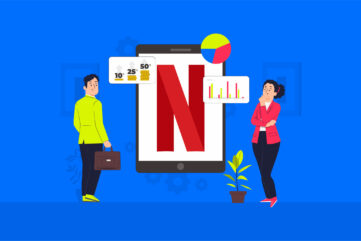How to get corporate sponsorship: Your guide to seducing sponsors

Finding cash for most charitable organisations is tough. Changing the world isn’t cheap, and when you don’t have a product to sell, a thriving consumer base, or a service to offer, it can feel as though your vision is drifting further away with every passing day.
The good news? Finding more corporate sponsorship could be the ultimate way to finance your charity marketing initiatives, attract new donors, and make your dreams a reality.
Companies are spending more cash on sponsorships every year – even in a struggling economy. Why? Because reputation is everything in this competitive world. Today’s customers want to do business with organisations that consistently show they care. That means that more brands are investing in corporate responsibility strategies that help them to showcase their unique values.
When it comes to corporate sponsorship, UK ventures and groups around the world are reaping the benefits of a more socially-conscious marketplace. In fact, corporate sponsors are willing to fund everything from charities to start-up businesses, events, conferences, and more. All you need to do is build the right brand, and plan to capture the attention of your very own benefactor.
In this guide, you’ll discover everything you need to know about how to get corporate sponsorship and promote better relationships with your patrons.

What is corporate sponsorship & why should it matter to you?
If you’re a non-profit organisation, corporate sponsorship can be the difference between establishing a thriving enterprise and becoming just another forgotten charity.
Every venture, regardless whether it’s a business, a philanthropic adventure, or a company built in your basement, needs revenue. While many firms rely upon the sale of services and products to raise funds, there are other ways to get the cash you need. While the precise corporate sponsorship definition established for each brand might differ, it all comes down to getting financial support from a brand that’s bigger than you.
Importantly, when you’re figuring out how to get corporate sponsorship, the first thing you should know is that a corporate sponsor isn’t the same as someone who just donates to your cause. Corporate sponsorship is a mutual business proposition. In other words, while your sponsors give you support in the form of cash, you must have something to give them in return.
Fortunately, since today’s consumers are always on the search for socially responsible companies and products, a brand image that demonstrates the same values as your chosen sponsor might be enough to get the finances you need.
If you can invest enough time and effort into creating a brand image that encompasses the right characteristics, then you may be able to convince corporate sponsors to support your company, just for the pleasure of being associated with you.
It’s also worth mentioning that developing a corporate sponsorship program isn’t just a great way to improve your chances of funding. Aside from giving you the money you need to operate in today’s competitive marketplace, sponsorship also:
- Promotes a stronger brand image: As mentioned above, reputation is crucial in today’s world. While many sponsors will reach out to you to enhance their own reputation, you can also benefit from being associated with high-level companies. Most corporate sponsorships deliver a better brand image for both charity and sponsor.
- Increases brand awareness: A connection with a bigger, better-known company is sure to help you develop brand awareness. If your sponsor has a stable position in your chosen marketplace, then that will reflect well on your charity too, helping your impact and reach to grow.
- Improves audience reach: Corporate sponsors allow you to connect with new customers from a range of different backgrounds. The more sponsors you attract, the larger your potential customer base grows.

What do companies want from a sponsorship program?
Before we start exploring the different things you’ll need to do to make your corporate sponsorship program a success, it’s worth thinking about what your benefactors will expect from you in return for their hard-earned cash. After all, while the benefits of sponsorship for a charity might be obvious, there also needs to be something in it for the backer too.
Non-profits and their corporate partners have a codependent relationship. While corporations provide charities with financial support, non-profits offer corporations positive PR and opportunities for disruptive marketing. To determine whether you’re ready for corporate sponsorship, ask yourself:
1. Recognition
A corporate sponsor wants to be appreciated for their generosity. To ensure that you’re giving your benefactor the recognition they deserve, you can:
- Acknowledge sponsors at events and interviews with the press.
- Live-stream an interview with them on social media, or record a Q&A.
- Place their brand logo on some of your marketing materials.
- Give sponsors VIP tickets to an upcoming event.
2. Measurable results
When it comes to corporate sponsorship, the companies you work with want to see evidence that their investment is coming back to them in some way. This could mean that they need to be able to see an improvement in their social media following, website traffic, or simply their brand reputation.
To help your sponsors see your value, you could always offer to track campaigns and give them regular updates of the number of impressions and conversions that are taking place because of your partnership.
3. Creativity
Finally, your sponsor will want to see that you’re using at least some of their money to generate more attention for their brand. This could mean that you launch a special marketing campaign that directs your followers towards your new partner or could mean that you work together on a sponsored event that attracts people from around the world. The best thing you can do is work together with your new benefactor on an idea that will generate positive results both for your non-profit organisation, and their bottom line.

Refining your corporate sponsorship program: How to get started
So, you have your corporate sponsorship definition, and you know how it can benefit your brand and your benefactor. Now, all you need to do is figure out how to get corporate sponsorship.
A strong corporate sponsorship program requires a good understanding of your company, an inspiring business pitch, and the ability to develop relationships with people who want to support your cause. Here are a few tips to improve your chances of success.
1. Know your platform and audience
Attracting a corporate sponsor requires you to know a great deal about two groups of people. The first audience to be aware of, defines the type of sponsor you want to attract, while the second refers to the followers you already have. Remember, earning corporate sponsorship isn’t the same as attracting donations for your brand. You need to give your sponsors something in return.
One of the biggest reasons that sponsors work with non-profits, is because they believe that it will give them access to a target market that they don’t already have at their fingertips. Figure out what kind of audience you already have to offer your benefactor. For instance, do you appeal primarily to mothers and family-oriented people, or are you focused on the socially-responsible millennial crowd? Once you have an insight into your customer base, you can start researching companies who want to reach that group.
2. Promise something unique
As mentioned above, corporate sponsorship comes with the expectation of a financial return on the behalf of your sponsor. In other words, these companies will only be willing to work with you if they know they’re going to get something back.
A good way to improve your chances of attracting funding is to create a marketing plan that demonstrates how your new partner can benefit from working with you.
- What skills can you bring to the table? Can you deliver an incredible social media marketing strategy that helps your sponsor to strengthen their relationships with new customers? Are your event-planning talents enough to get a whole generation of clients talking?
- Who is your target audience? As mentioned above, make sure that your target audience overlaps with the customer base your sponsor is trying to reach. This will help you to be more appealing in the eyes of your benefactor.
- What’s unique about you? Look at what other charitable organisations in your industry are doing and try to find something that will make you unique. For instance, if you’re an environmental organisation, could you team up with a VR company to simultaneously demonstrate the impact of your clean-up efforts to a customer with virtual tours, and advertise your tech sponsor’s gadgets?
3. Create a business pitch
Achieving successful corporate sponsorship is hard work. You essentially need to sell your organisation to another company and prove the value of what you’re doing. For charitable groups, creating a passionate business pitch shouldn’t be too difficult. After all, there’s a good chance that you established your non-profit team because you had a strong desire to change something in the world.
Your business pitch should include the story of how you began and demonstrate to your sponsors what you plan to do if you get the funding you need. Give your would-be benefactors a reason to get behind you, then move onto the financial side of things.
Remember to give a detailed description of your target market, a SWOT analysis of your team, and an explanation of how your venture will benefit your supporters. Once you’ve laid everything out with creative copy, graphs, infographics and other visuals, you can ask for the money you need to make your dream a reality.

How to get corporate sponsorship: Steps for success
One of the most fundamental elements of getting corporate sponsorship is knowing how to create an application package, or “sponsorship proposal” that earns the right attention from a benefactor. Remember, your sponsor wants to know for a fact that they’re going to get something back from working with you. If you can’t demonstrate your value from day one, you’re going to struggle.
As with most things in the business world, your corporate sponsorship program will go much more smoothly if you start with a strong plan of action. The following steps will help to ensure that you’re ready to find, connect with, and seduce the right sponsors for your non-profit.
Step 1: Research your potential sponsors
In the non-profit world, it can often feel as though you should be appealing to anyone who might be able to support your cause. While there’s nothing wrong with developing the occasional broad sponsorship package, most charitable companies will have more success appealing to a specific selection of benefactors.
Start by creating a wish-list of sponsors. If you know your followers are younger, millennial types interested in experiences and technology, then it makes sense to partner with media groups, technology brands, and entertainment businesses.
Once you’ve created a broad list of sponsors, narrow them down to about 20 or 30 options. You can do this by looking for connections between what your backer wants to accomplish, and what you know you can give. For instance, if you have a great social following, and you know certain firms want to improve their reach online, then it makes sense to connect with those companies.
Investigating the marketing objectives of each sponsor will help you to make your sponsorship proposal more about them, instead of all about you. Remember that your backers want a measurable return on their investment. The more you know about what they want to achieve, the more you can convince them that you’re the key to reaching their goals.
Step 2: Make the right connections and relationships
Once you’ve found the perfect match for your new corporate sponsorship relationship, you’ll be ready to start reaching out to the people who can say “yes” to your proposition. The more you work on building your brand image through sponsorship, the more you’ll come to learn that only a handful of people in any company actually have the power to facilitate a partnership with your non-profit.
While you’re sure to talk to many lower-level employees who empathise with your goals, it’s important not to waste your time on people without authority. Go straight to the source and present your proposal with brevity, brilliance, and focus. Ask for what you want, show how you can help your benefactor, and then give them time to decide.
The right marketing materials, including a brand manifesto that introduces your organisation, can be helpful here. Remember, don’t crowd your benefactor after you’ve made your proposal, but don’t abandon them either. Follow them on social media, add them to your newsletter list, or ask them to follow your blog so they can begin to develop a relationship with your brand.
Once you’ve caught the attention of sponsors, it’s up to you to make the most of your established brand to reinforce your image and demonstrate your worth. Try:
- Publishing thought-leadership content to show your authority in your space.
- Interacting with your social followers through polls, contests, and other exciting engagement strategies to show off your existing audience.
- Providing regular updates on the philanthropic progress you’re making in your newsletters.
Step 3: Follow up and constantly show value
Finally, after your would-be sponsor has taken your proposal, followed you on social media, and begun reading your blog posts, don’t just wait for them to get back in touch with you. Although it’s worth giving benefactors a few weeks so that they have time to go over your pitch in detail, it’s important to check in. If you don’t hear back after a while, send another email or pick up the phone.
Often, when it comes to developing a valuable corporate sponsorship program, charities are working with brands that are incredibly busy and fast-paced. Even if the company you contacted enjoyed your proposal, there’s a good chance that they got distracted and forgot to get back in touch.
Make contact where you can, but don’t constantly focus on asking for money. Instead, send an email asking your sponsor if they’ve thought about what they can accomplish by teaming up with your brand lately, or whether they noticed the high engagement metrics on your last social media post.
Take any opportunity you can to show your worth, and eventually, sponsors will begin to take notice.
Insights and inspiration: Corporate sponsorship examples
There’s more to figuring out how to get corporate sponsorship than writing the perfect proposal and impressing your benefactor with dazzling graphics.
Many event professionals consider finding and maintaining a sponsor to be the hardest challenge they face, and the same is true for non-profit organisations. Once you have a great proposal for your potential backer, and you’ve done everything you can to earn their attention, you’ll need to come up with a marketing strategy that’s going to benefit both of you.
A brand consultancy could help you to create the best application pack, but in the meantime, check out the following examples for some inspiration, and important corporate sponsorship tips.
1. Red Bull
Red Bull is a great example of a company that always seems to be willing to act as a benefactor for the “next big thing”. Importantly, for a company to get funding from Red Bull, they need to demonstrate not just that they’re a forward-thinking organisation, but also that they have some value to offer the energy-drink giant too.
For instance, Red Bull sponsored the “Wings for Life” world running event in 2017, to get everyone running at the same time around the globe. A huge number of celebrities turned up to the event, and 100% of the entry fee went to the Wings for Life research foundation, which looks for ways to support people with spinal injuries.
Not only does the name of the charity “Wings for Life” resonate with Red Bull’s tagline “Gives You Wings”, but the nature of the charity also connects with the company’s quest to achieve incredible things.
2. SXSW and Ten-X
If you’re interested in the music and film world, then you’ve probably heard of South by Southwest. The SXSW Festival brings together the most creative and innovative thinkers in the world and unites them in an incredible, action-packed experience.
Online real estate company Ten-X became a sponsor for the event in 2017, announcing their arrival with a Ten-X contest featuring a prize package for two including airfare, hotels, and registration for two people to attend SXSW Interactive (another SXSW event).
This is a great example of how a sponsor can go beyond just offering money to a charitable company. By giving attendees a prize to win, Ten-X ensured that more people would be talking about South by Southwest – generating a greater buzz for the event.
3. TIFF and L’Oréal
The Toronto International Film Festival, or TIFF, has worked alongside various international cosmetic companies for years now. When it comes to corporate sponsorship, the TIFF Group knew that they had a natural synergy with firms involved with beauty and glamour.
To generate attention for the TIFF event, and their sponsors, TIFF teamed up with L’Oréal to develop a limited-edition range of nail polishes for customers to buy in support of the organisation. This is a fantastic example of how corporate sponsorship can include out-of-the-box thinking to earn the attention of a target audience.
When sponsors work together with the venture they’re supporting, they can create innovative ways to generate profits on both sides.

Corporate sponsorship UK: Making your vision a reality
Achieving successful corporate sponsorship can be tough. It’s not enough to simply try and sell your mission to a corporation. While sharing your story and ideas might earn you the empathy of a firm, it’s unlikely to get them to open their wallets. Sponsors need to be able to see the commercial opportunities of your cause.
Think about how you can position your charity in comparison to other organisations in your field. What makes you so special that firms should stand up, take notice, and give you their support?
In many ways, finding out how to get corporate sponsorship for your non-profit is a lot like figuring out how you can attract customers to a business. You’ll need a USP, a unique tone of voice, and a way of earning the attention of your target audience.
While today’s firms are more interested in improving their reputation and demonstrating their social responsibility, they won’t support your charity out of the goodness of their heart. Every firm who sponsors a non-profit will expect to get something in return.
The more time you take crafting a powerful proposal and a brand that’s sure to enhance the bottom line of your benefactors, the more likely you are to get the financial support you need.
Now read these:
—The definitive guide to corporate identity
— How to create a fundraising campaign strategy
— Bringing in leads through inbound marketing.















